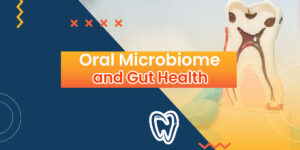Dental emergencies can be distressing and often require prompt action to alleviate pain, prevent complications, and preserve dental health. This comprehensive guide will cover various types of dental emergencies, how to recognize them, and crucial steps to take before seeking professional dental care.
Types of Dental Emergencies – Tooth Fractures and Breakages
- What to Do: If a tooth breaks or fractures, rinse your mouth with warm water and apply a cold compress to reduce swelling. Save any broken pieces and visit a dentist immediately.
- Prevention: Avoid biting hard objects and wear a mouthguard during sports to prevent fractures.
Knocked-Out Tooth (Avulsed Tooth)
- Immediate Action: Handle the tooth by the crown (top part), rinse gently if dirty, and try to reinsert it into the socket. If not possible, store it in milk or saliva and see a dentist within 30 minutes for the best chance of saving the tooth.
- Prevention: Use proper protective gear during activities that pose a risk of dental injury.
Dental Abscess
- Symptoms and Treatment: An abscess is a painful infection around the tooth root or between the tooth and gum. Symptoms include severe toothache, swollen gums, and fever. Treatment involves draining the abscess and may include antibiotics prescribed by a dentist.
- Prevention: Maintain good oral hygiene and attend regular dental check-ups to detect and treat cavities early.

Severe Toothache
- Immediate Relief: Rinse your mouth with warm water, floss to remove any trapped debris, and take over-the-counter pain medication if necessary. Avoid placing aspirin directly on the tooth or gums.
- When to Seek Help: Persistent or severe toothache could indicate a serious underlying issue such as an infection or cracked tooth, requiring prompt dental attention.
The Ultimate Guide To Oral Hygiene: Best Practices And Techniques
First Aid Basics
- Cleaning: Rinse your mouth with warm water to clean the affected area.
- Pain Management: Use ice packs or cold compresses on the outside of the mouth to reduce swelling and alleviate pain.
- Avoiding Aspirin: Do not apply aspirin directly to the gums or tooth, as this can cause burns.
Contacting Emergency Dental Services
- Finding a Dentist: Have contact information for emergency dental services readily available, especially if you’re traveling or in a new area.
- Explaining the Situation: Provide clear details about your symptoms and any immediate actions taken to assist the dentist in preparing for your visit.
Transport and Care of Injured Teeth
- Handling a Knocked-Out Tooth: Hold the tooth by the crown, avoiding touching the root, and transport it in milk or saliva to keep it moist.
- Protecting Fractured Teeth: Save any broken pieces and bring them to the dentist, who may be able to reattach them.
Maintain Good Oral Hygiene
- Brushing and Flossing: Brush teeth at least twice a day and floss daily to prevent tooth decay and gum disease.
- Regular Dental Visits: Schedule routine check-ups and cleanings to identify potential dental issues early.
Use Protective Gear
- Mouthguards: Wear a mouthguard during sports activities to prevent dental injuries caused by impact.
Being prepared for dental emergencies involves knowing how to respond swiftly and appropriately. By understanding common dental emergencies, practicing good oral hygiene, and having access to emergency dental care, you can effectively manage unexpected dental issues and protect your oral health.
Remember, prompt action is crucial in minimizing pain, preventing further damage, and preserving your teeth and gums for the long term. If you ever face a dental emergency, don’t hesitate to seek professional help immediately.




